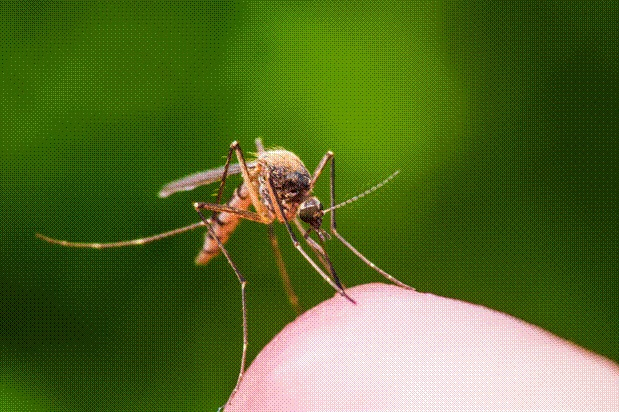Turning Research into Action: Madeleine Thomson and the Future of Climate Adaptation

The gap between climate research and practical health interventions has long frustrated scientists and policymakers alike. While climate models can predict temperature increases decades into the future, translating that knowledge into actionable strategies for preventing disease outbreaks or protecting vulnerable populations remains a complex challenge. Dr. Madeleine Thomson’s career has been dedicated to bridging this gap, developing tools and methodologies that transform climate data into life-saving interventions.
From Data to Decisions
The challenge of translating research into action becomes clear when considering the different timescales involved in climate science and public health decision-making. Climate scientists excel at understanding long-term trends—what temperatures and rainfall patterns might look like in 50 or 100 years. However, public health officials need information on much shorter timescales: What’s happening now? What happened last year? What might happen next year in this specific location?
Thomson, who previously directed the WHO Collaborating Centre on Malaria Early Warning Systems at Columbia University, explains this disconnect: “Climate variability, which includes the impact of El Niño and La Niña, has a significant short-term impact on global temperatures and regional rainfall. Making predictions for the next 5 to 15 years is very difficult. And this is the timeframe often requested by decision makers.”
This temporal mismatch creates practical problems. A malaria control officer in Kenya needs to know whether to expect higher transmission rates this season, not whether temperatures will be 2°C warmer in 2070. Bridging this gap requires developing new methodologies that can provide actionable information at the timescales health professionals actually use.
Building Early Warning Systems
One of the most successful examples of research translation has been the development of early warning systems for climate-sensitive diseases. These systems combine meteorological data with epidemiological information to provide advance notice of potential disease outbreaks, giving health systems time to prepare and respond.
The concept sounds straightforward, but implementation requires overcoming significant technical and institutional challenges. Different types of climate data—from satellite observations to weather station measurements to climate model outputs—must be integrated with health surveillance data that may be incomplete or reported with significant delays.
Thomson’s work with the WHO Collaborating Centre focused on developing these integrated approaches, particularly for malaria and meningococcal meningitis in sub-Saharan Africa. The challenge wasn’t just technical but also institutional: how do you create systems that busy health officials will actually use, and how do you ensure the warnings lead to effective action rather than false alarms?
Digital Tools for Disease Prevention
Current initiatives funded by Wellcome demonstrate how digital technology can transform disease prevention. Twenty-four research teams across 12 countries are developing new digital tools specifically designed to respond to climate-sensitive infectious diseases.
In Vietnam’s Mekong Delta region, researchers are creating E-DENGUE, a system designed to predict dengue outbreaks up to two months in advance. This extended lead time allows public health practitioners to mobilize resources and concentrate interventions in areas most likely to experience outbreaks, rather than simply responding after cases begin appearing.
The Vietnamese project illustrates the complexity of translating research into practical tools. The system must account for local climate patterns, mosquito breeding cycles, population density, urbanization patterns, and existing health infrastructure. It also needs to provide information in formats that local health officials can understand and act upon, considering limited resources and competing health priorities.
Capacity Building and Training
Perhaps the most fundamental barrier to implementing climate-adaptive health interventions is knowledge. Many health professionals receive limited training in environmental and climate factors that influence disease transmission. This creates a gap where even excellent climate information goes unused because health systems lack the expertise to interpret and apply it effectively.
Thomson advocates for incorporating “fairly straightforward information on climate and environmental disease drivers in all epidemiological training that happens around the world.” This seemingly simple change could have profound impacts on global health preparedness.
The training gap extends beyond individual health workers to institutional capacity. Health systems need procedures for interpreting climate forecasts, protocols for scaling up interventions based on environmental warnings, and partnerships with meteorological services and environmental agencies.
Real-World Implementation Challenges
The practical challenges of implementing climate-adaptive health interventions become apparent when examining specific examples. Pakistan’s experience with malaria following climate-related flooding in 2024 illustrates both the predictability and unpredictability of climate health impacts.
Heavy monsoon rains—increasingly intense due to climate change—created extensive flooding. When floodwaters receded, they left behind stagnant water pools that provided ideal mosquito breeding sites. The result was a surge from 500,000 malaria cases in 2021 to 1.3 million cases in 2024.
This sequence was scientifically predictable: flooding creates mosquito habitat, which increases vector populations, which can lead to disease outbreaks. However, translating that knowledge into preventive action requires coordination between meteorological services, environmental agencies, vector control programs, and health systems—coordination that often doesn’t exist.
Urban Adaptation Strategies
Cities represent a particular challenge and opportunity for climate health adaptation. Urban heat islands can intensify temperature-related health risks, but cities also have the infrastructure and governance capacity to implement protective measures.
Thomson emphasizes that “simple changes, like adding green spaces and waterways, can help cool urban areas and protect public health.” These interventions address the heat island effect while providing multiple co-benefits including air quality improvement, recreational opportunities, and ecosystem services.
However, implementing such changes requires overcoming institutional barriers. Urban planning, public health, and environmental management often operate in separate silos. Effective climate adaptation requires breaking down these silos and developing integrated approaches that consider health impacts in all urban development decisions.
Technology and Traditional Approaches
Innovation in climate health adaptation combines high-tech solutions with traditional public health approaches. Satellite data can now track environmental conditions that support disease vector breeding, while mobile phone networks can rapidly collect and disseminate health surveillance information.
The World Mosquito Program exemplifies this blend of innovation and traditional vector control. The program releases mosquitoes infected with Wolbachia, a naturally occurring bacterium that reduces mosquitoes’ ability to transmit viruses like dengue and Zika. This biological control method works alongside traditional approaches like removing standing water and using insecticides.
However, climate change creates new challenges even for innovative approaches. Extreme heat can reduce the effectiveness of Wolbachia-infected mosquitoes, requiring the development of heat-resistant bacterial strains for future control programs.
Addressing Health Inequities
Climate health impacts fall disproportionately on vulnerable populations, both within and between countries. Lower-income countries in tropical regions face higher baseline exposure to vector-borne diseases while having fewer resources for adaptation measures.
This inequality extends to individual communities. People with limited healthcare access, inadequate housing, and poor sanitation face greater susceptibility to both heat-related illness and infectious disease outbreaks. Elderly populations, children, pregnant women, and people with chronic health conditions are particularly vulnerable to temperature-related health impacts.
Effective climate adaptation must address these inequities directly, ensuring that protective interventions reach the populations that need them most. This requires not just technical solutions but also attention to social determinants of health and environmental justice.
The Role of Climate Services
One of the most promising developments in climate health adaptation is the emergence of “climate services”—specialized information products that translate complex climate data into actionable guidance for specific sectors, including health.
These services bridge the communication gap between climate scientists and health professionals by providing climate information in formats that health decision-makers can understand and use. Rather than raw temperature and precipitation forecasts, climate services might provide guidance like “conditions favorable for malaria transmission expected to increase 30% over the next three months.”
Thomson’s work with international climate health networks has helped establish standards and best practices for climate services in the health sector, including protocols for validating predictions and measuring the effectiveness of climate-informed health interventions.
Future Directions
The future of climate health adaptation will likely involve increasingly sophisticated integration of multiple data streams. Satellite observations, weather station measurements, epidemiological surveillance, and social media monitoring can all provide pieces of the puzzle for understanding and predicting health risks.
Artificial intelligence and machine learning offer possibilities for analyzing these complex, multi-source datasets to identify patterns that human analysts might miss. However, the key challenge remains ensuring that sophisticated analysis translates into simple, actionable guidance for health professionals working under resource constraints.
Research initiatives increasingly emphasize participatory approaches that involve communities in monitoring environmental conditions and reporting health outcomes. These approaches can improve both data collection and community preparedness while building local capacity for climate adaptation.
Measuring Success
Evaluating the effectiveness of climate health adaptation presents its own challenges. Success might be measured by prevented disease outbreaks, reduced heat-related mortality, or improved community preparedness. However, attributing health outcomes to specific climate interventions requires sophisticated study designs and long-term follow-up.
Thomson notes that the most important outcome may be building adaptive capacity—the ability of health systems to recognize emerging threats and respond effectively. This capacity is harder to measure than specific health outcomes but may be more important for long-term resilience.
The Imperative for Integration
As climate change accelerates, the need for effective research translation becomes increasingly urgent. The scientific community understands many of the relationships between climate variables and health outcomes, but converting that understanding into protective action remains inconsistent across regions and health systems.
Successful climate health adaptation requires sustained commitment to integration—between disciplines, sectors, and scales of action. It demands investment in both cutting-edge technology and fundamental capacity building, recognition of health inequities and environmental justice concerns, and coordination across the traditional boundaries that separate climate science from public health practice.
The tools and knowledge for effective climate health adaptation largely exist. The challenge now is scaling up implementation and ensuring that research insights translate into protection for the communities that need it most. As climate risks continue evolving, the urgency of bridging the research-to-action gap only intensifies.
Anyone can join.
Anyone can contribute.
Anyone can become informed about their world.
"United We Stand" Click Here To Create Your Personal Citizen Journalist Account Today, Be Sure To Invite Your Friends.
Before It’s News® is a community of individuals who report on what’s going on around them, from all around the world. Anyone can join. Anyone can contribute. Anyone can become informed about their world. "United We Stand" Click Here To Create Your Personal Citizen Journalist Account Today, Be Sure To Invite Your Friends.
LION'S MANE PRODUCT
Try Our Lion’s Mane WHOLE MIND Nootropic Blend 60 Capsules
Mushrooms are having a moment. One fabulous fungus in particular, lion’s mane, may help improve memory, depression and anxiety symptoms. They are also an excellent source of nutrients that show promise as a therapy for dementia, and other neurodegenerative diseases. If you’re living with anxiety or depression, you may be curious about all the therapy options out there — including the natural ones.Our Lion’s Mane WHOLE MIND Nootropic Blend has been formulated to utilize the potency of Lion’s mane but also include the benefits of four other Highly Beneficial Mushrooms. Synergistically, they work together to Build your health through improving cognitive function and immunity regardless of your age. Our Nootropic not only improves your Cognitive Function and Activates your Immune System, but it benefits growth of Essential Gut Flora, further enhancing your Vitality.
Our Formula includes: Lion’s Mane Mushrooms which Increase Brain Power through nerve growth, lessen anxiety, reduce depression, and improve concentration. Its an excellent adaptogen, promotes sleep and improves immunity. Shiitake Mushrooms which Fight cancer cells and infectious disease, boost the immune system, promotes brain function, and serves as a source of B vitamins. Maitake Mushrooms which regulate blood sugar levels of diabetics, reduce hypertension and boosts the immune system. Reishi Mushrooms which Fight inflammation, liver disease, fatigue, tumor growth and cancer. They Improve skin disorders and soothes digestive problems, stomach ulcers and leaky gut syndrome. Chaga Mushrooms which have anti-aging effects, boost immune function, improve stamina and athletic performance, even act as a natural aphrodisiac, fighting diabetes and improving liver function. Try Our Lion’s Mane WHOLE MIND Nootropic Blend 60 Capsules Today. Be 100% Satisfied or Receive a Full Money Back Guarantee. Order Yours Today by Following This Link.






